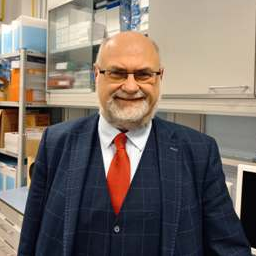Genetic and Metabolic Molecular Research of Lysosomal Storage Disease 2.0
A special issue of International Journal of Molecular Sciences (ISSN 1422-0067). This special issue belongs to the section "Molecular Pathology, Diagnostics, and Therapeutics".
Deadline for manuscript submissions: closed (31 May 2022) | Viewed by 32085
Special Issue Editor
Interests: gene expression regulation; DNA replication; bacteriophages; plasmids; human genetic diseases; neurodegeneration
Special Issues, Collections and Topics in MDPI journals
Special Issue Information
Dear Colleagues,
Lysosomal storage diseases (LSD) are a group of inherited metabolic disorders in which the defects of various lysosomal enzymes and regulatory proteins result in the accumulation of different macromolecules in these organelles. Over 50 LSD are described in the literature, and they are among the most intensively studied genetic disorders. They are also model genetic diseases for the development of various therapeutic approaches. The introduction of enzyme replacement therapy for LSD created a breakthrough in treating genetic diseases, and several different therapeutic options are currently being studied, including hematopoietic stem cell transplantation, gene therapy, substrate reduction therapy, and others. However, to develop new therapies, the molecular mechanisms of LSD must be understood in great detail. Now is the time for extensive molecular research on LSD. This Special Issue is devoted to publishing the results of such studies, including basic research on the molecular mechanisms of LSD, translational studies on novel therapies, and clinical investigations performed at the molecular level. Review articles on all these aspects are also welcome. Therefore, this Special Issue shall provide a comprehensive view on molecular aspects of various LSD.
Although the pathophysiology, mechanism, and therapeutic strategies of lysosomal storage diseases are topics covered by another Special Issue of IJMS, this issue is devoted to presenting research on the molecular aspects of these diseases. The Editors consider that this group of diseases is at the forefront of genetic and metabolic disorders that are studied on the molecular level, and our understanding of molecular mechanisms, molecular pharmacology, and clinical aspects on the molecular level is crucial for further research in this field, as well as for opening new ways of thinking about other, currently less understood diseases.
Prof. Dr. Grzegorz Wegrzyn
Guest Editor
Manuscript Submission Information
Manuscripts should be submitted online at www.mdpi.com by registering and logging in to this website. Once you are registered, click here to go to the submission form. Manuscripts can be submitted until the deadline. All submissions that pass pre-check are peer-reviewed. Accepted papers will be published continuously in the journal (as soon as accepted) and will be listed together on the special issue website. Research articles, review articles as well as short communications are invited. For planned papers, a title and short abstract (about 100 words) can be sent to the Editorial Office for announcement on this website.
Submitted manuscripts should not have been published previously, nor be under consideration for publication elsewhere (except conference proceedings papers). All manuscripts are thoroughly refereed through a single-blind peer-review process. A guide for authors and other relevant information for submission of manuscripts is available on the Instructions for Authors page. International Journal of Molecular Sciences is an international peer-reviewed open access semimonthly journal published by MDPI.
Please visit the Instructions for Authors page before submitting a manuscript. There is an Article Processing Charge (APC) for publication in this open access journal. For details about the APC please see here. Submitted papers should be well formatted and use good English. Authors may use MDPI's English editing service prior to publication or during author revisions.
Keywords
- lysosomal storage diseases
- molecular mechanisms of genetic disorders
- metabolic diseases
- accumulation of macromolecules in cells
- enzyme replacement therapy
- hematopoietic stem cell transplantation
- gene therapy
- substrate reduction therapy
- translational research
- novel therapies for genetic diseases
Related Special Issues
- Genetic and Metabolic Molecular Research of Lysosomal Storage Disease in International Journal of Molecular Sciences (8 articles)
- Genetic and Metabolic Molecular Research of Lysosomal Storage Disease 3.0 in International Journal of Molecular Sciences (11 articles)
- Genetic and Metabolic Molecular Research of Lysosomal Storage Disease 4.0 in International Journal of Molecular Sciences (1 article)






